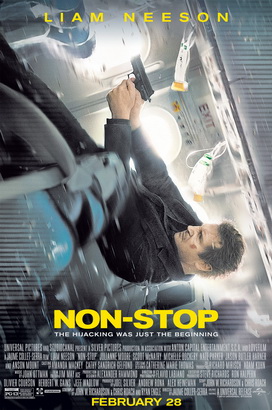
I broke a few rules with Spider-Man: Across the Spider Verse last Thursday at my local theatre. It was near empty, so thankfully, I didn’t disrupt things too much. I became that guy down in front that needed to be shushed because he was either finger pointing at something or exclaimed “Oh crap!” a little too loud. 2023 has given us many great films so far, but right now, Spider-Man: Across the Spider Verse is the frontrunner for the any awards for animation. As the ending credits rolled, I took a deep breath & rose on shaky legs, an experience that only hits me when I’m up very high staring over a ledge or adrenaline kicks in. I lost myself in that movie.
Or perhaps I’m just growing old.
Either way, Across the Spider Verse takes everything great about the Academy Award Winner Into the Spider Verse and turns it up a notch. The best experience is to go in as blind as you can. There are no real spoilers here (or at least, only a few), though times are changing. Within 20 hours of the film’s release, we already had videos on YouTube to help understand the ending and tons of Tiktokers posting in-theatre video. There’s almost no real reason to ever have to watch a movie in the theatre or maybe even write about one, although the experience is worth it. I’m somewhat jaded, though writing about movies is still fun, at least. Across the Spider Verse and it’s message of doing one’s own thing is inspiring. This is less of a review and more of just my experience with the movie.
Across the Spider Verse continues the tale of Miles Morales (Shameik Moore, Dope), the Official Spider-Man for his universe. Where the first story helped to flesh out the notion that anyone can put on the mask and use their abilities, this film focuses on the weight of responsibility that comes with it. Miles is doing great for himself. He’s come into his own with his powers, and does good with the city. He’s okay with his grades, but his relationship with his parents Rio (Luna Lauren Velez, The First Purge) and Jefferson (Brian Tyree-Henry, Bullet Train) could use some help since he’s keeping his other identity a secret . When Miles is visited by Gwen (Hailee Steinfeld, Bumblebee) on a mission of her own, he finds himself thrust into an adventure he’s not quite ready for. I missed the main trailers for this, which does give away some major plot points. That could also be a factor in why I enjoyed it so much. Everything, or most of it was new to me.
Three new directors are taking on the mantle for this sequel. This time around we have Avatar: The Legend of Korra’s Joachim Dos Santos, Cloudy With a Chance of Meatballs Producer Justin K. Thompson (who also was a producer for Into the Spider Verse) and One Night In Miami’s Kemp Powers (who also wrote Disney/Pixar’s Academy Award Winner, Soul). The story still belongs to Christopher Miller and Phil Lord, who are best known for the 21 Jump Street , The Lego Movies and most recently, The Mitchells vs. The Machines. I still argue that Lord Miller’s version of Solo could have been magic, but that’s another story.
The story in Across the Spider Verse builds off of the original in a number of ways, and the cast helps to flesh things out. New additions include Oscar Isaac’s (Triple Frontier) Miguel O’Hara, a Spider Man charged with protecting the Spider Verse. We also have Issa Rae (HBO’s A Black Lady Sketch Show, Little) as the motorcycle riding Jessica Drew, Academy Award Winner Daniel Kaluuya (Judas and the Black Messiah) as a punk rock Spider-Man named Brodie. As everyone’s seen in the trailers, Jake Johnson (Tag) is back as Peter B. Parker with a new addition in his life. The film is peppered with other cast members and cameos – much like the party sequence in The Lego Batman Movie, but ultimately, it’s Moore and Steinfeld’s characters that carry the most weight. It felt great and nerve wracking to worry about the fates of these characters.
My cousin would be particularly happy to find that the film passes what she refers to as the “Supernatural” Test. From her point of view, when Bela Talbot was introduced to the series Supernatural, Sam and Dean Winchester were rendered stupid in her presence. It was almost as if they just discovered hunting monsters. Miles and Gwen make for a great pair while still managing to be amazing at what they do separately. This doesn’t mean there’s a lack of vulnerability and/or quirkiness between the two, but when it counts, they both manage to bring something to the table.
There’s love and creativity flowing through every frame of Across the Spider Verse. Much like the original, colors are vibrant, and you truly feel as if you’re moving through the pages of your favorite comic book (dots and all). There are tons of blink-and-you’ll-miss-them moments thoughout the movie that warrant a 2nd (or 3rd) viewing or at least a major scrub through when the film reaches streaming. The cities are full of life and the action sequences are wonderful to behold. I can’t begin to wonder how any of it looks on an IMAX screen.
Composer Daniel Pemberton (The Bad Guys) also deserves a lot of love, as well as as the additional side music. He builds on the original themes, while adding some new ones in the process. If anything, some of the music may have been too loud.
Overall, Spider-Man: Across the Spider Verse is a near perfect sequel that had me cheering on the heroes and biting my nails at the unfolding story.










